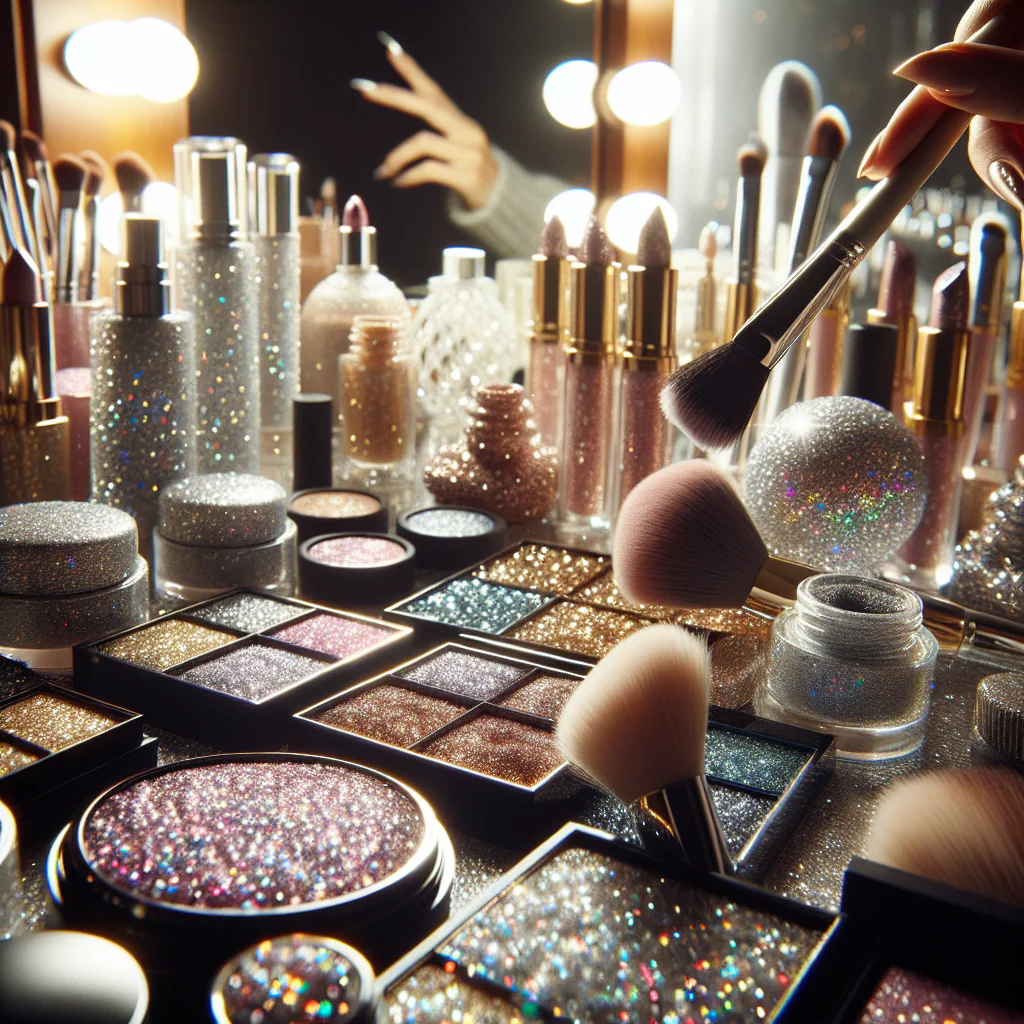-
Table of Contents
“Sparkle Safely: Blue Glitter Safety Tips for Creative Kids!”
Introduction
When it comes to children’s crafts, Blue Glitter can add a magical touch to any project. However, safety should always be a priority. This introduction outlines essential safety tips for using Blue Glitter in children’s crafts, ensuring a fun and secure creative experience. From choosing non-toxic materials to supervising young crafters, these guidelines will help parents and educators promote safe crafting practices while allowing kids to explore their artistic talents.
Safe Handling of Blue Glitter in Children’s Crafts
When engaging children in craft activities, particularly those that involve the use of materials like Blue Glitter, it is essential to prioritize safety. Glitter, while a popular embellishment that adds sparkle and excitement to projects, can pose certain risks if not handled properly. Therefore, understanding safe handling practices is crucial for ensuring a positive crafting experience for both children and adults.
To begin with, it is important to select non-toxic glitter specifically designed for children’s crafts. Many craft stores offer a variety of glitter options, including biodegradable and eco-friendly choices. These alternatives not only reduce environmental impact but also minimize potential health risks associated with traditional glitter, which may contain harmful substances. By opting for non-toxic glitter, caregivers can provide a safer crafting environment, allowing children to explore their creativity without unnecessary concerns.
Once the appropriate glitter has been selected, the next step involves establishing a designated crafting area. This space should be well-ventilated and easy to clean, as glitter can easily become dispersed throughout the environment. Utilizing a large, flat surface covered with newspaper or a plastic tablecloth can help contain any mess. Additionally, it is advisable to conduct crafting activities in a space that is free from valuable or delicate items, as glitter can be challenging to remove from certain surfaces.
As children begin to work with Blue Glitter, supervision is paramount. Adults should closely monitor the crafting process to ensure that children are using the glitter appropriately and safely. This includes guiding them on how to apply the glitter without excessive spillage and encouraging them to use tools such as brushes or spoons to minimize direct contact with the glitter. By demonstrating proper techniques, adults can help children develop good habits while fostering a sense of responsibility for their crafting materials.
Moreover, it is essential to educate children about the importance of not ingesting glitter. While most non-toxic glitters are safe in small amounts, they are not intended for consumption. Therefore, caregivers should explain the potential risks associated with swallowing glitter and encourage children to keep it away from their mouths. Reinforcing this message can help instill a sense of awareness and caution in young crafters.
In addition to these precautions, it is wise to have a cleanup plan in place. Glitter can be notoriously difficult to clean up, so having a vacuum or a lint roller on hand can facilitate the process. After the crafting session, it is advisable to gather any leftover glitter and dispose of it properly, as loose glitter can easily find its way into the environment, potentially harming wildlife. Encouraging children to participate in the cleanup process not only teaches them responsibility but also reinforces the importance of maintaining a tidy workspace.
Finally, it is beneficial to remind children to wash their hands thoroughly after handling glitter. This practice not only removes any residual glitter but also reinforces good hygiene habits. By incorporating these safety tips into crafting activities, caregivers can create a fun and secure environment for children to express their creativity while minimizing potential hazards associated with Blue Glitter. Ultimately, with proper precautions and guidance, crafting with glitter can be an enjoyable and enriching experience for children, fostering their artistic skills and imagination.
Non-Toxic Blue Glitter Options for Kids’ Projects
When it comes to children’s crafts, Blue Glitter can add a magical touch, transforming simple projects into dazzling creations. However, safety is paramount, especially when it involves materials that children will handle. Therefore, selecting non-toxic Blue Glitter options is essential for ensuring a safe crafting experience. Fortunately, there are several alternatives available that not only provide the desired aesthetic but also prioritize the health and well-being of young crafters.
One of the most popular non-toxic options is biodegradable glitter, which is made from plant-based materials such as cellulose. This type of glitter is not only safe for children but also environmentally friendly, as it breaks down naturally over time. When choosing biodegradable Blue Glitter, it is crucial to verify that it is certified as non-toxic and free from harmful chemicals. Many brands offer a variety of shades, including vibrant blues, allowing children to explore their creativity without compromising safety.
In addition to biodegradable glitter, there are also synthetic glitters that are labeled as non-toxic. These glitters are often made from polyester and are designed to be safe for use in children’s crafts. When selecting synthetic Blue Glitter, it is advisable to look for products that comply with safety standards set by organizations such as the American Society for Testing and Materials (ASTM) or the Consumer Product Safety Commission (CPSC). These certifications ensure that the glitter has been tested for harmful substances and is deemed safe for children.
Another excellent option for non-toxic Blue Glitter is glitter made from natural minerals. This type of glitter is often derived from mica, a naturally occurring mineral that can be ground into a fine powder and dyed in various colors, including blue. Mica-based glitter is not only safe for children but also adds a unique shimmer to crafts. As with other glitter options, it is essential to confirm that the product is free from additives or chemicals that could pose a risk to young users.
Moreover, when incorporating Blue Glitter into children’s crafts, it is important to consider the application method. For instance, using glue sticks or non-toxic craft glue can help minimize the risk of inhalation or ingestion, as these adhesives allow for a more controlled application of glitter. Additionally, encouraging children to work in well-ventilated areas can further reduce any potential hazards associated with glitter particles becoming airborne.
Furthermore, it is advisable to supervise children during crafting sessions, especially when using glitter. This oversight not only ensures that they are using materials safely but also provides an opportunity for adults to educate children about the importance of handling craft supplies responsibly. Teaching children to clean up after their projects can instill good habits and reduce the likelihood of glitter ending up in unintended places.
In conclusion, while Blue Glitter can enhance children’s crafts, selecting non-toxic options is crucial for ensuring a safe and enjoyable crafting experience. Biodegradable glitter, non-toxic synthetic glitter, and mica-based glitter are all excellent choices that prioritize safety without sacrificing creativity. By being mindful of the materials used and promoting safe crafting practices, parents and educators can foster a love for creativity in children while keeping their health and safety at the forefront. Ultimately, with the right precautions and materials, crafting with Blue Glitter can be a delightful and worry-free activity for children.
Cleaning Up Blue Glitter: Tips for Parents and Caregivers
Cleaning up Blue Glitter after a crafting session with children can be a daunting task, but with the right strategies, it can be managed effectively. Glitter, while a popular and visually appealing material for various art projects, tends to spread easily and cling to surfaces, making it a challenge to remove. Therefore, it is essential for parents and caregivers to adopt a systematic approach to ensure a thorough cleanup while minimizing frustration.
To begin with, preparation is key. Before engaging in any glitter-related activities, it is advisable to lay down a protective covering on the work surface. This could be a plastic tablecloth, old newspapers, or even a large piece of cardboard. By doing so, you create a designated area for the crafting session, which not only helps contain the glitter but also simplifies the cleanup process afterward. Once the crafting is complete, the first step in cleaning up is to gather any large pieces of materials used during the activity, such as paper or fabric, and dispose of them properly. This initial step reduces the amount of glitter that may scatter during the subsequent cleaning phases.
Next, it is important to address the glitter that has inevitably fallen onto the work surface. A damp cloth or paper towel can be particularly effective in picking up glitter particles. The moisture helps to trap the glitter, preventing it from becoming airborne again. It is advisable to wipe in one direction rather than back and forth, as this technique minimizes the risk of spreading the glitter further. Additionally, using a lint roller can be an excellent alternative for removing glitter from surfaces, as its sticky sheets can easily lift away the tiny particles.
Furthermore, when it comes to cleaning up glitter from floors, a vacuum cleaner equipped with a hose attachment can be a valuable tool. However, it is crucial to ensure that the vacuum is designed to handle fine particles, as some models may not be suitable for glitter. If a vacuum is not available, sweeping with a broom can also be effective, but it is essential to use a dustpan to collect the swept-up glitter carefully. This method prevents the glitter from scattering again and allows for a more efficient cleanup.
In addition to surfaces, it is important to consider the clothing and skin of the children involved in the crafting session. For clothing, a lint roller or tape can be used to remove glitter particles effectively. Simply press the sticky side against the fabric, and the glitter will adhere to it, making removal easy. For skin, a gentle wash with soap and water usually suffices, but if glitter persists, a bit of baby oil or lotion can help lift it away.
Finally, it is beneficial to involve children in the cleanup process. Teaching them the importance of tidying up after crafting not only instills responsibility but also makes the task more enjoyable. By turning cleanup into a game or challenge, parents and caregivers can foster a sense of teamwork and accomplishment.
In conclusion, while cleaning up Blue Glitter may seem like a formidable task, employing a few strategic methods can streamline the process significantly. By preparing the workspace, utilizing appropriate cleaning tools, and involving children in the cleanup, parents and caregivers can ensure that crafting remains a fun and creative experience without the stress of an overwhelming mess.
Q&A
1. **Question:** What type of glitter is safest for children’s crafts?
**Answer:** Use non-toxic, biodegradable glitter made from natural materials, as it is safer for children and the environment.
2. **Question:** How can I prevent glitter from getting everywhere during crafts?
**Answer:** Use a tray or a large sheet of paper to contain the glitter, and consider using a spray adhesive to minimize loose glitter.
3. **Question:** What should I do if glitter gets into a child’s eyes?
**Answer:** Rinse the eye gently with clean water for several minutes and seek medical attention if irritation persists.
Conclusion
In conclusion, when using Blue Glitter in children’s crafts, it is essential to prioritize safety by choosing non-toxic, biodegradable options, supervising children during the crafting process, and ensuring proper cleanup to prevent ingestion or environmental harm. Additionally, using glitter in well-ventilated areas and encouraging children to wash their hands after crafting can further enhance safety. By following these tips, parents and caregivers can create a fun and safe crafting experience for children.











